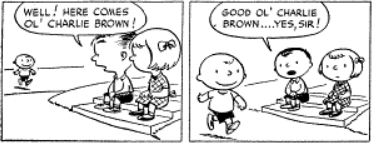Over 70 years ago, comic strip artist Charles M. Schultz published the first few panels of his new comic called “Peanuts” in the monochrome newspaper, St. Pioneer Press. Although the final original strip was released in 2000, the beloved comic has continued to be a staple in entertainment, a prime example of how popular media can tackle social issues and continue the legacy of its creator, who died in Feb. 12, 2000.
In the early years of “Peanuts,” many characters lacked their distinct features: Charlie Brown’s iconic yellow zig-zag shirt was originally a plain white top, Snoopy walked on all fours and Peppermint Patty donned a dress and bow instead of her staple green shirt and black trousers. But within a few years the characters rapidly gained popularity and became household names. Even a decade after Schultz’s passing, Charlie Brown’s iconic “good grief” and Snoopy’s alter ego “Cool Joe” were integral, iconic memorandums of my childhood.
As the comic rose to prominence as the most popular daily strip in America, it gained new characters, brand deals and even television shows that brought the characters even further into the limelight — and with influence over such a large audience, Schultz made liberal social commentary in the midst of a period of great political turmoil.
In the 1960s, as America worked to desegregate as a whole, “Peanuts” was one of the few representations of a desegregated future in popular media. Following the assassination of Martin Luther King Jr., Schultz was urged to add an African American character into his comic strip by school teacher Harriet Glickman — and so the character “Franklin” was born.
Besides the addition of Franklin, Schultz, a Santa Rosa resident, consistently included social commentary in his daily strips, the focus of which included gender norms, gun control and even religion. For example, a 1997 strip depicts Snoopy purchasing a gun without a license, emphasizing America’s loose regulations on who can purchase firearms.
He did this all while preserving the colorful, comforting plot and picture of “Peanuts,” creating innumerable emblematic tropes, quotes and life lessons.
Like other fans, I’ll never get bored of the variations of Lucy swiping out the football in front of Charlie Brown’s feet just as he is about to take his biggest kick, or Snoopy’s adventures bravely battling the infamous Red Baron perched atop his red dog house. From this comic, I will forever remember Linus’s line: “Big sisters are the crab grass in the lawn of life,” and Lucy screaming: “You blockhead!” Without these quintessential characters, my childhood would have been nowhere near as vibrant as it was.
Schultz also managed to sneak life lessons into each strip — Snoopy’s “happy dances” taught me that dancing alone — and enjoying it — can help you appreciate the quieter moments in life. Linus splitting up his blanket so that his friends could experience the same comfort demonstrated how the positive effects of sharing far outweigh the sacrifices.
Unlike the more boisterous and chaotic Donald Duck, Chip and Dale or Mickey Mouse, the “Peanuts” gang was my group of comfort characters as a kid. With lovable personas, comedic interactions and subtle lessons from the perspectives of schoolchildren navigating life, flipping through the experiences of Charlie Brown and his gang entertained me while helping me cherish my family, friends and adventures, even on bad days.
But never mind the phrases and the heartwarming and hilarious situations Schultz brought to life — “Peanuts” taught me some of the most important life lessons I could ever ask for: Adults aren’t always right, don’t be afraid to ask your 5-cent psychiatrist for help, but, most importantly, good grief, you don’t need to be perfect to be loved by all of America.




























